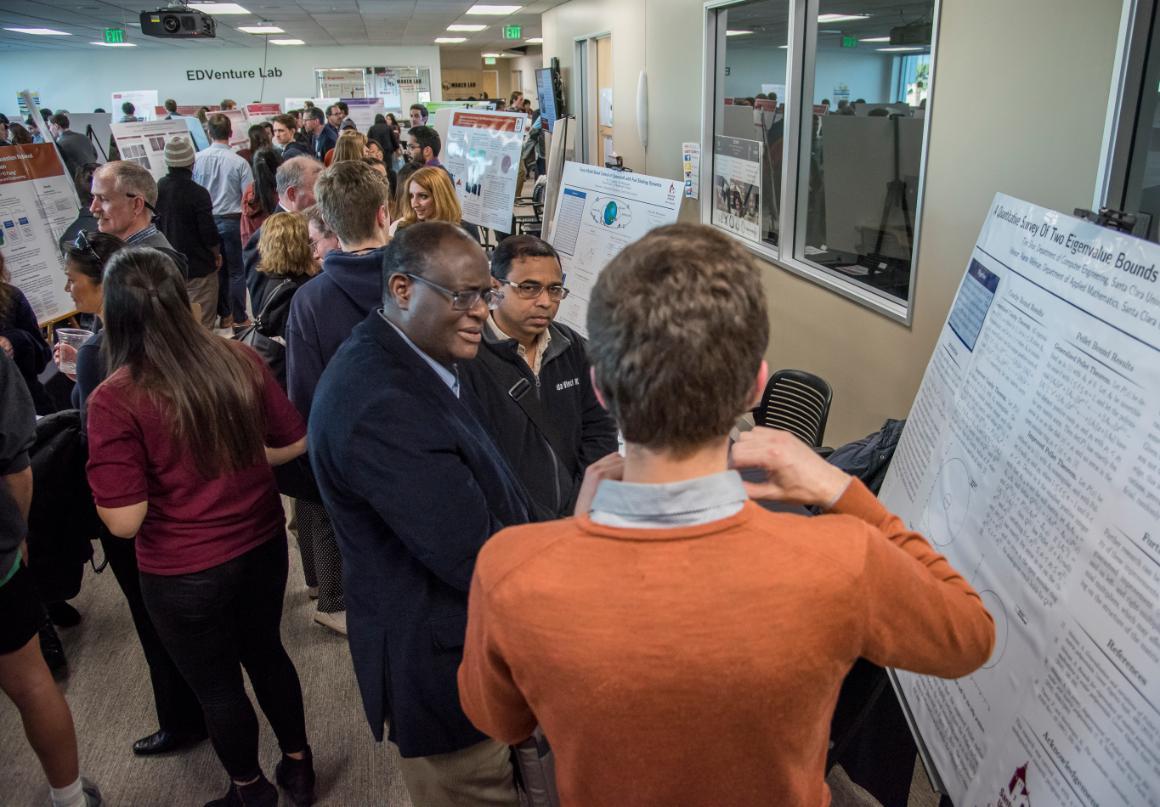
Hey, Kids—Let’s Put on a Show!
It started, as so many great things do, with a simple question—okay, it was really two questions: What are our Ph.D. students researching, and how can they share what they’ve been working on with the engineering faculty and staff? That inquiry led to a series of conversations, and what began as a glimmer of an idea about a small, informal event to highlight Ph.D. students morphed into the first-ever Engineering Research Showcase, held last February.
An estimated 400 guests—engineering faculty and staff, to be sure, but also colleagues from across campus, industry research partners, advisory board members, parents, and friends of the School of Engineering—flocked to a poster session featuring faculty, post-doctorate, Ph.D. candidate, master and bachelor student research. Bioengineering, computer science and engineering, electrical engineering, mathematics, mechanical engineering, and web design and engineering were all on display, with faculty and students on hand explaining their work and answering visitors’ questions. Nearly 40 posters were presented, and 35 percent of the researchers were women.
Prizes were awarded for best presentation posters in Ph.D., master’s, and undergraduate categories. The competition for best undergraduate poster ended in a tie between Tim Shur, a computer engineering and mathematics double major, for “A Quantitative Survey of Improvements to Bounds on Eigenvalues,” and electrical engineering’s Zachary Baron and Richard Senegor for their “investigation of the viability of using carbon nanotubes grown on graphene as a functional alternative to copper and tungsten in integrated circuits.” Robert McDonald, mechanical engineering master’s student, won with his “preliminary research into practical applications of adaptive navigation of multirobot clusters, using a state machine architecture.” Taking the prize for “Compact Microstrip Yagi-Uda Antenna Arrays for Microwave Hyperthermia at 5.8 GHz,” electrical engineering’s Ph.D. candidate Nivedita Parthasarathy said “"My work with Prof. Ramesh Abhari on Microwave Hyperthermia is profoundly interesting to me not just because of the engineering challenge, but also because working on biomedical applications is uniquely rewarding in its potential to change human lives. Receiving the poster award is an honor and serves as motivation to continue applying the engineering skills I learned at SCU toward more efficient cancer treatment!"
Hundreds turned out for the inaugural Engineering Research Showcase. Photo: Joanne Lee, SCU Photographer